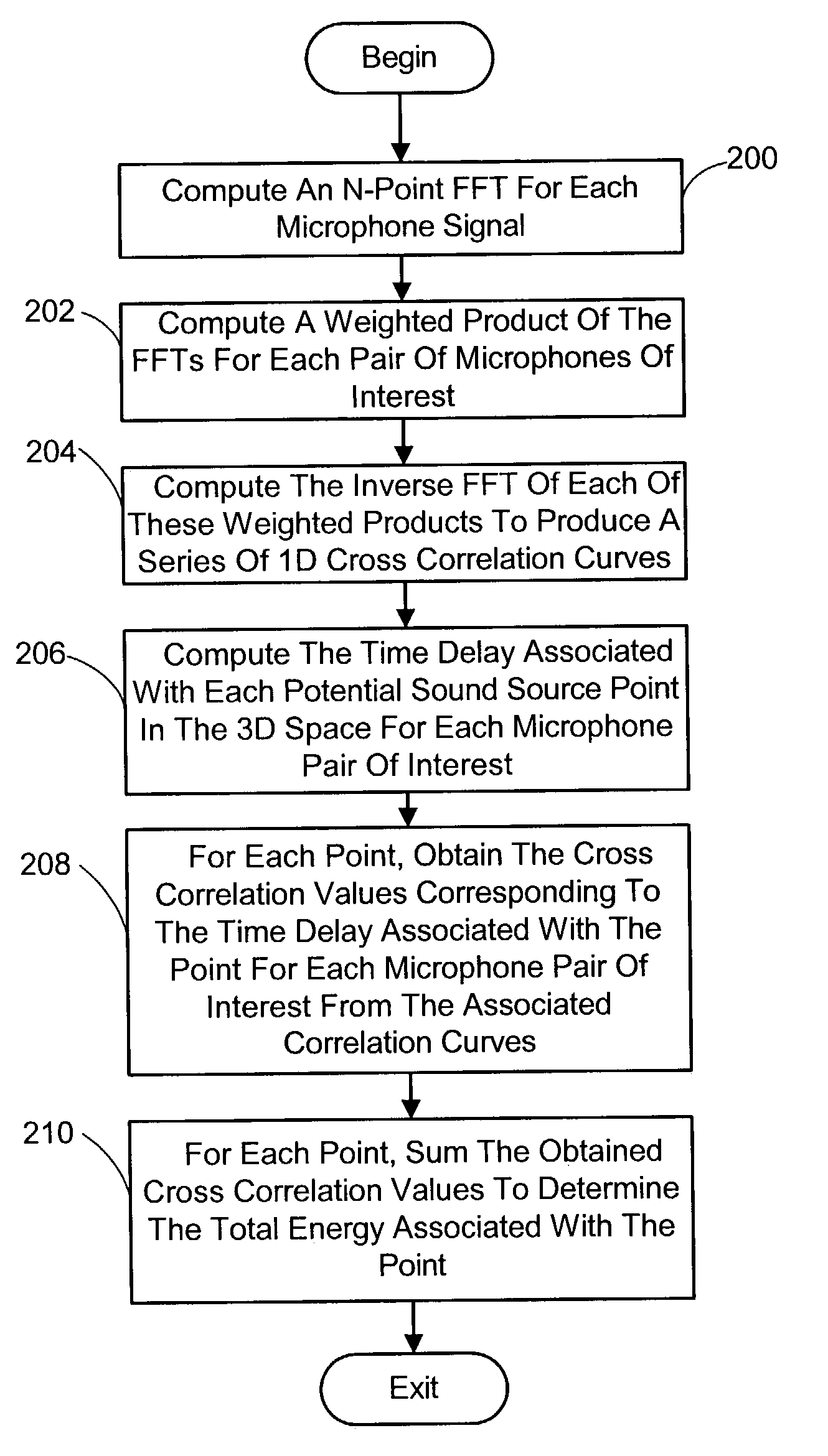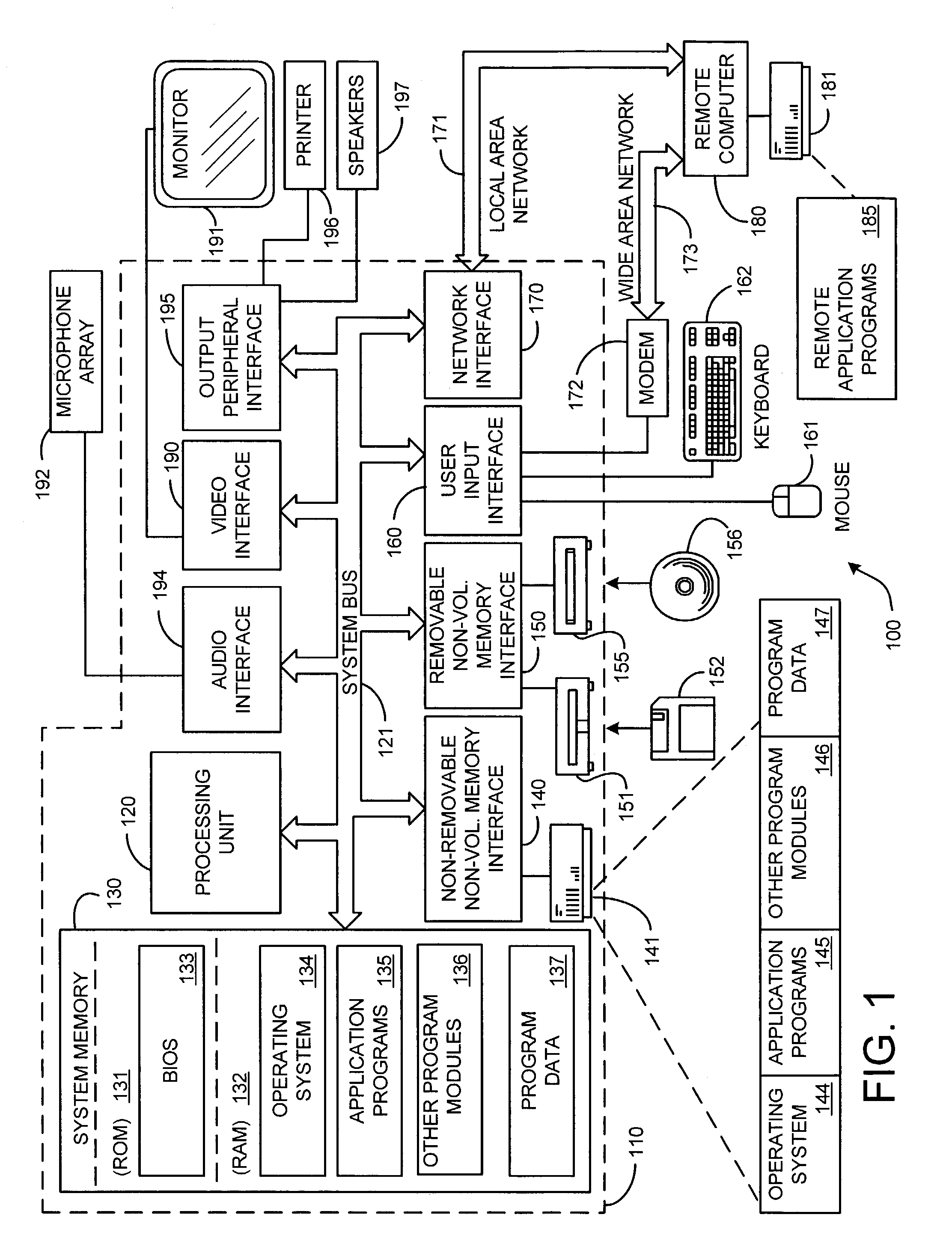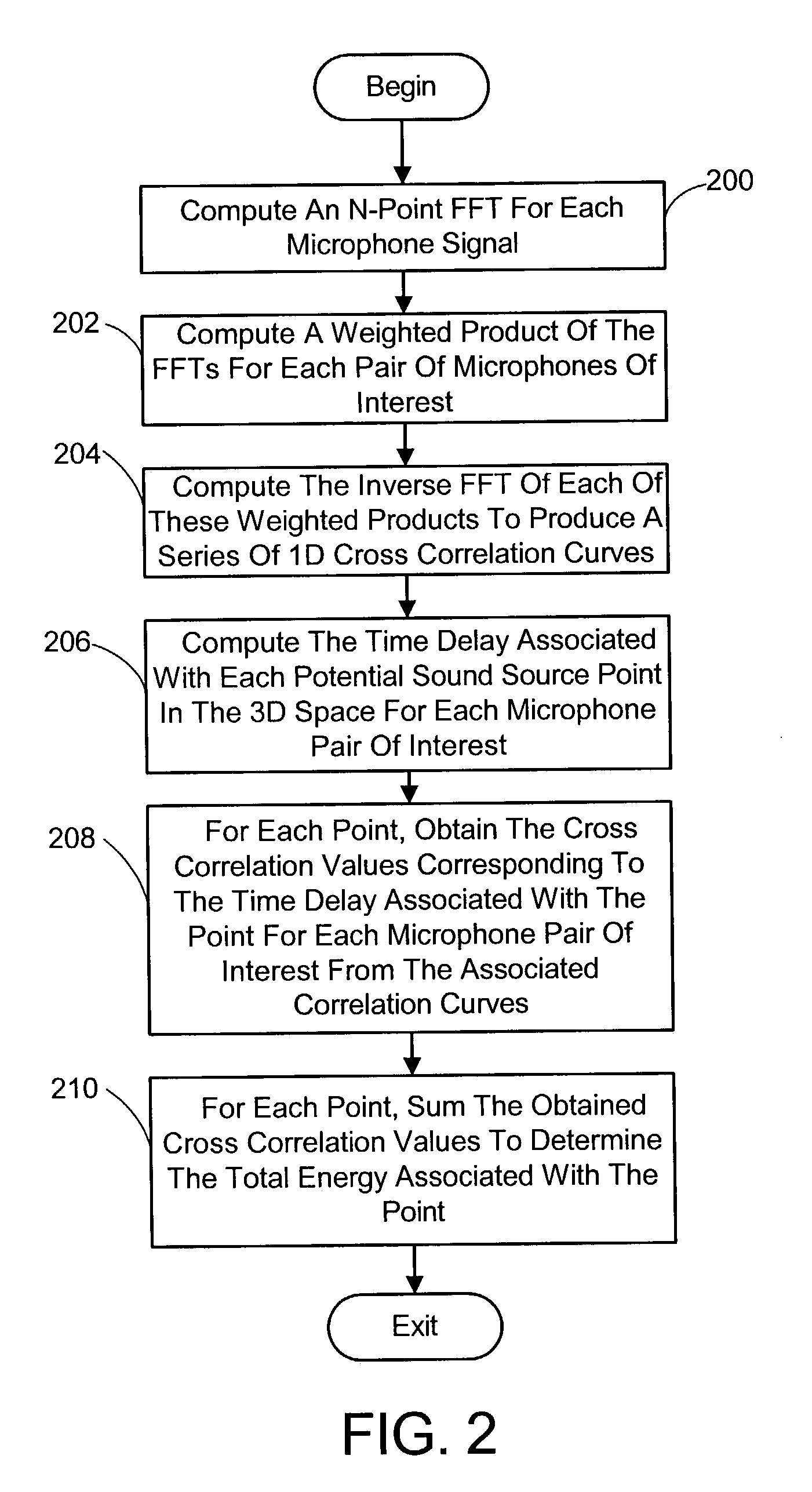System and process for robust sound source localization
a sound source and localization system technology, applied in the field of finding the location of a sound source, can solve the problems of wasting useful information, not fully taking advantage of the weighting function of research into the direct approach, and more computationally expensive than the 2-tdoa method, so as to enhance the robustness of the selected location, reduce the effect of uncorrelated noise and/or reverberation, and maximize the energy of each sensor
- Summary
- Abstract
- Description
- Claims
- Application Information
AI Technical Summary
Benefits of technology
Problems solved by technology
Method used
Image
Examples
experiment 2
4.3. SB SSL
[0075]The comparison between the proposed new SB approach against existing SB approaches is summarized in Table 2 as shown in FIG. 6.
4.4. Experiment 3: 2-TDOA vs.1-TDOA vs. SB
[0076]The comparison between the proposed new 1-TDOA and SB approaches against an existing 2-TDOA approach is summarized in Table 3 shown in FIG. 7. The 2-TDOA approach we used is the maximum likelihood estimator JTDOA developed in [2], which is one of the best 2-TDOA algorithms. In addition to using Tests R and S, we further use Test A to see how they perform with respect to different source locations. The result is summarized in Table 4 shown in FIG. 8.
4.5. Observations
[0077]The following observations can be made based on Tables 1–4:
[0078]From Table 1, the proposed new 1-TDOA outperforms the PHAT and ML based approaches. The PHAT approach works quite well in general, but performs poorly when the SNR is low. Tele-conferencing systems, e.g., [4], require prompt SSL, and the promptness often implies ...
PUM
 Login to view more
Login to view more Abstract
Description
Claims
Application Information
 Login to view more
Login to view more - R&D Engineer
- R&D Manager
- IP Professional
- Industry Leading Data Capabilities
- Powerful AI technology
- Patent DNA Extraction
Browse by: Latest US Patents, China's latest patents, Technical Efficacy Thesaurus, Application Domain, Technology Topic.
© 2024 PatSnap. All rights reserved.Legal|Privacy policy|Modern Slavery Act Transparency Statement|Sitemap



